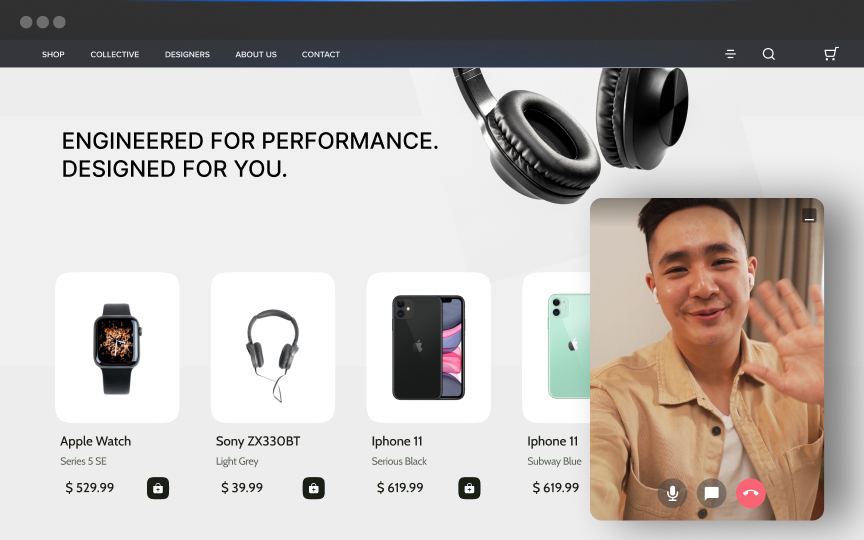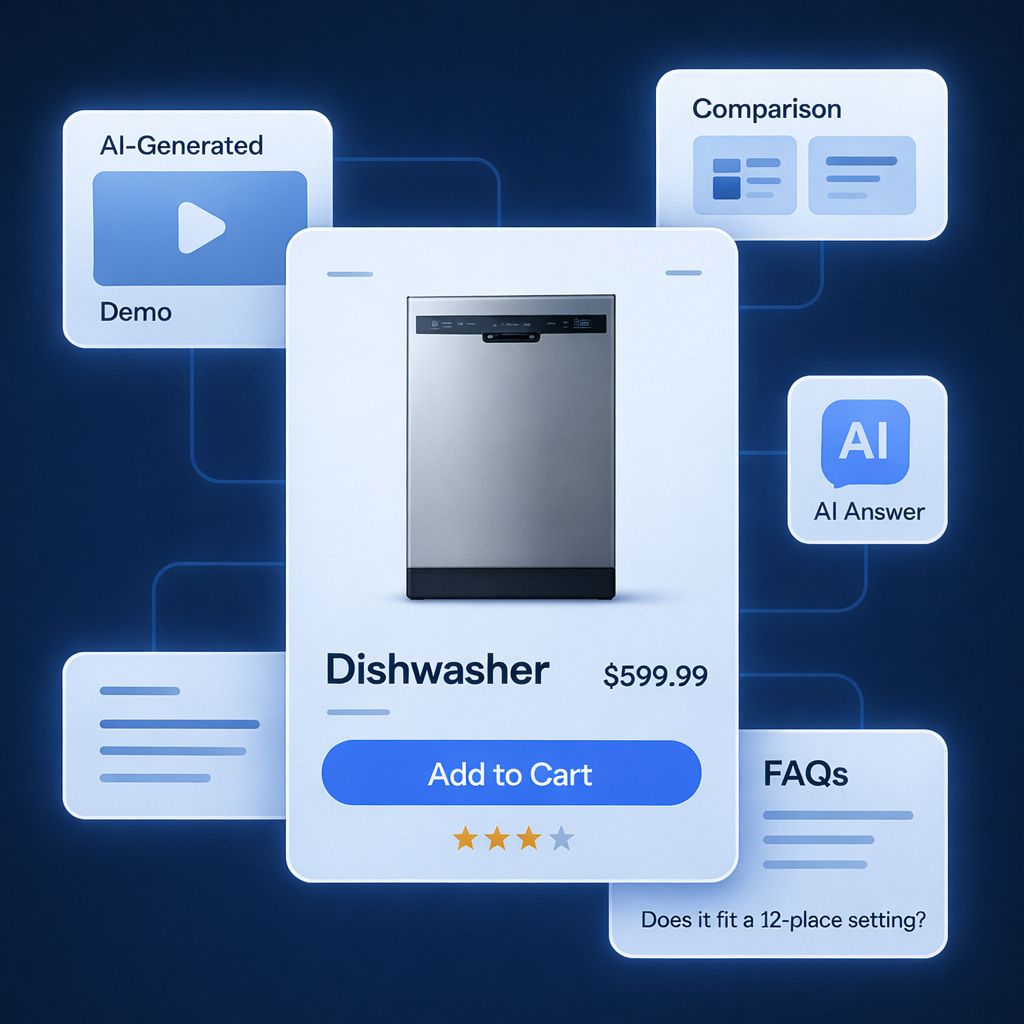In the rapidly changing world of online shopping, adopting digital transformation in eCommerce is crucial for businesses seeking to improve customer engagement, increase conversions, and stay competitive. In this article we will discuss 12 key strategies to understand and implement digital transformation in eCommerce.
1: Current Trends in eCommerce Digital Transformation
Understanding and implementing the latest trends in digital transformation, such as live commerce, helps meet customer expectations and outpace competitors.
Use Market Research and Consumer Insights
Market research and consumer insights are key to digital transformation. Analyzing customer behavior enables tailored products and strategies. Data analytics tools offer real-time insights, enabling segmentation, personalized campaigns, and smarter business decisions.
- KPIs: Track metrics to evaluate strategy effectiveness.
- Consumer Insights: Focus on tailoring products and marketing strategies.
- Data Analytics: Use real-time data to guide decisions.
Use Machine Learning and Artificial Intelligence
Machine learning and AI revolutionize eCommerce through personalization and operational efficiency. AI analyzes customer data for personalized product recommendations, improving shopping experiences. Predictive analytics optimize inventory and pricing strategies, driving data-based decisions.
- AI Chatbots: Provide 24/7 customer support for efficiency.
- Personalized Recommendations: Boost conversion rates with tailored offers.
- Predictive Analytics: Forecast trends to streamline operations.
2: Develop an Omni-Channel Strategy
Developing a comprehensive omnichannel retail strategy creates a seamless experience across all sales channels, strengthening brand presence and customer engagement.
Integrate Physical and Digital Sales Channels
Combining physical and digital channels to create phygital experiences, a key aspect of digital transformation in retail, creates a smoother customer experience. Strategies like Buy Online,Pick Up In-Store (BOPIS), curbside pickup, and replicating the in-store experience online boost convenience. Synchronizing inventory and orders ensures a consistent shopping experience across channels.
- BOPIS & Curbside Pickup: Improve convenience and foot traffic.
- Synchronization: Align orders and inventory across channels.
- Digital & Physical: Provide seamless interaction between channels.
Maintain Consistent Branding
Maintaining cohesive branding across all customer touchpoints builds trust and reinforces brand identity. Consistent messaging and visuals across websites, social media, and physical stores help customers recognize and trust your brand, enhancing customer loyalty.
- Unified Branding: Keep messaging and visuals consistent.
- Customization Tools: Use platforms to ensure branding uniformity.
- Data Analysis: Tailor efforts using insights from different channels.
3: Enhance Mobile Commerce
As mobile shopping grows, refining your mobile commerce strategy is essential to stay competitive.
Optimize Websites for Mobile
Optimizing your website for mobile ensures smooth navigation and fast loading. Adopt responsive design to adapt your site for various screen sizes. Prioritize fast page loading by compressing images and minimizing code, reducing the chances of site abandonment.
- Responsive Design: Ensure site functionality on mobile devices.
- Fast Loading Times: Improve page speed for better user experience.
- Mobile-First Design: Simplify navigation and user interaction.
Develop Mobile Apps
Creating a dedicated mobile app deepens customer engagement by offering personalized experiences. Push notifications, virtual product trials, and offline access engage customers further. Apps enhance the shopping experience, making it easier and more enjoyable for users.Incorporating AI in online shopping within your mobile app can further personalize and enhance the user experience.
- Push Notifications: Inform customers of new products or promotions.
- Augmented Reality (AR): Enable virtual product trials.
- Offline Access: Provide value through app features beyond the website.
4: Personalization and Customer Segmentation
Personalizing the customer journey drives engagement, increases sales, and fosters loyalty.
Use Data for Targeted Offers
Data analysis helps craft targeted offers and personalized experiences. Machine learning and ecommerce AI enhance customer segmentation, leading to tailored product suggestions and promotions. Targeted marketing campaigns engage users more effectively, driving higher conversions.
- Customer Data: Segment based on preferences and behavior.
- Personalized Suggestions: Use browsing history for recommendations.
- Targeted Campaigns: Send tailored offers to increase engagement.
Boost Conversion Rates
Personalized shopping experiences increase conversions and order values. AI-driven product recommendations, a key aspect of AI in retail, enhance engagement by suggesting relevant products. Dynamic pricing based on customer segments improves profitability and customer satisfaction.
- AI Recommendations: Improve relevance to boost sales.
- Dynamic Pricing: Adjust prices to match customer behavior.
- Personalized Content: Keep customers engaged with relevant material.
5: Build Trust in the Digital Landscape
Building customer trust through secure transactions and transparent communication is essential for long-term success.
Ensure Secure Transactions
Implementing secure payment options builds trust and protects customer data. Use encryption, compliant payment gateways, and regular security audits to safeguard information. Staying compliant with data protection regulations fosters confidence in your business.
- Encryption: Secure customer data during transmission.
- Payment Gateways: Ensure secure and trusted transactions.
- Security Audits: Regularly check and update security protocols.
Maintain Transparent Communication
Clear communication about data usage helps build customer trust. Provide transparent privacy policies, explain how data is used, and inform customers of any security updates. Offering accessible customer support enhances trust and credibility.
- Clear Policies: Present privacy terms in simple language.
- Data Transparency: Explain why and how data is collected.
- Security Updates: Keep customers informed of changes.
6: Use Augmented Reality (AR)
Utilizing AI and AR in retail and livestream shopping trends enhances the online shopping experience by making it more immersive and interactive.
Offer Virtual Product Trials
AR technology allows customers to try products virtually before purchasing, improving satisfaction and reducing return rates. Features like virtual try-ons for apparel or furniture give customers a better understanding of the product, leading to higher conversions.
- Virtual Try-On: Let customers see products before buying.
- Reduce Returns: Improve purchase confidence with virtual previews.
- Increase Satisfaction: Enhance user experience through AR.
Provide 360-Degree Views
Offering 360-degree product views enables customers to fully explore items, increasing confidence and engagement. Use high-quality imagery and 3D modeling to showcase products from all angles, helping customers make informed decisions.
- 360-Degree Views: Show products from every angle for clarity.
- High-Quality Images: Use professional visuals to engage customers.
- Informed Purchases: Allow customers to explore products thoroughly.
7: Automate Marketing and Payments
Automating marketing and payment processes improves efficiency and enhances the customer experience.
Automate Marketing Efforts
Marketing automation streamlines operations, saving time and resources. AI-powered chatbots handle customer queries, while personalized email campaigns increase engagement. Automated marketing delivers relevant content, improving conversion rates and customer satisfaction.
- AI Chatbots: Provide 24/7 support and boost engagement.
- Personalized Emails: Tailor campaigns to specific customer segments.
- Automation: Deliver timely, relevant marketing content.
Offer Seamless Digital Payment Options
Providing a variety of digital payment options reduces cart abandonment and enhances convenience. Integrating mobile wallets and one-click checkout options simplifies the buying process, ensuring a seamless and secure transaction for customers.
- Mobile Wallets: Offer Apple Pay, Google Pay, and more.
- One-Click Checkout: Simplify the checkout process for convenience.
- Secure Transactions: Ensure safety to build customer trust.
8: Implement Advanced Analytics
Advanced analytics drive data-informed decisions, optimize performance, and enhance customer experiences.
Gain Customer Insights
Advanced analytics tools collect and analyze customer data, providing insights into behavior, preferences, and trends. Use these insights to personalize marketing efforts and tailor product offerings, increasing relevance and engagement.
- Customer Behavior: Analyze data to understand trends.
- Personalization: Use insights to craft targeted strategies.
- Trend Analysis: Stay ahead of market changes with data.
Improve Performance
Advanced analytics help track key performance indicators (KPIs), optimize processes, and forecast trends. Continuously monitoring performance allows businesses to make data-driven decisions, enhancing efficiency and improving outcomes.
- Monitor KPIs: Track metrics like sales, conversions, and engagement.
- Optimize Operations: Use data to streamline processes.
- Forecast Trends: Stay competitive with predictive insights.
9: Focus on Customer Experience
Delivering an exceptional customer experience is crucial for standing out in the competitive eCommerce market.
Provide Personalized Interactions
Providing personalized interactions is key to successful digital customer engagement. AI-powered recommendations, tailored content, and personalized messages help create meaningful interactions, improving the overall shopping experience.
- Tailored Recommendations: Suggest relevant products based on preferences.
- AI-Powered Interactions: Use AI to enhance personalization.
- Customer Engagement: Personalization boosts interaction and loyalty.
Establish Feedback Loops
Implementing feedback loops, including live chat strategies, enables continuous improvement by collecting and acting on customer input. Use surveys, reviews, and data analytics to refine product offerings and improve services, fostering long-term loyalty and satisfaction.
- Customer Feedback: Regularly gather and analyze customer input.
- Refine Offerings: Adjust products and services based on feedback.
- Improve Loyalty: Build trust through responsive action.
10: Strengthen Online Presence
A robust online presence helps businesses reach more customers and build brand recognition.
Build a Robust Online Presence
Optimizing your website for search engines and user experience, along with effective customer engagement strategies, helps you attract and retain customers. Regularly monitor site performance and SEO rankings. Partnering with eCommerce service providers can enhance your online strategy and drive traffic.
- SEO Optimization: Ensure your site ranks well in search engines.
- User Experience: Create a smooth, engaging experience for visitors.
- Partner Expertise: Collaborate with experts for best results.
Use Social Media
Leverage social media to engage your audience, promote products, and build a community around your brand. Ensure consistent messaging and branding across all social channels to maintain a cohesive online identity.
- Engage Audience: Share interactive content on social platforms.
- Product Promotion: Use social media to boost product visibility.
- Consistent Branding: Keep messaging uniform across all channels.
Strategy 11: Cybersecurity Imperatives
Strong cybersecurity practices are essential for protecting customer data and ensuring trust in digital transactions.
Implement Data Protection Measures
Robust cybersecurity measures, including encryption, firewalls, and regular software updates, protect customer data and prevent breaches. Automating security processes ensures continuous protection, while partnering with IT experts keeps your systems secure.
- Encryption: Safeguard data during transmission and storage.
- Firewalls: Protect your network from cyber threats.
- Regular Updates: Keep software up to date to prevent vulnerabilities.
Ensure Compliance with Regulations
Adhering to data protection laws, such as GDPR, ensures that your business stays compliant and trustworthy. Regularly update privacy policies, maintain transparency in data handling, and provide customers with clear opt-out options to build trust.
- GDPR Compliance: Stay up-to-date with regulations.
- Privacy Policies: Clearly outline data usage to customers.
- Transparency: Communicate openly about data practices.
12: Direct-to-Consumer Strategies
Direct-to-consumer (DTC) models allow businesses to connect directly with customers, building stronger relationships and brand loyalty.
Enhance Customer Interaction
DTC strategies open direct communication channels between brands and customers, offering personalized experiences and collecting valuable customer data. These interactions help businesses tailor their offerings and create a more engaged customer base.
- Direct Communication: Build stronger relationships through personalized interaction.
- Customer Data: Use insights to tailor product offerings.
- Engagement: Strengthen customer loyalty through direct contact.
Build Community
Creating a community around your brand through social media campaigns, online forums, or virtual events fosters engagement and loyalty. A strong brand community encourages repeat purchases and positive word-of-mouth, driving growth.
- Community Building: Foster customer engagement with social campaigns.
- Loyalty: Strengthen connections through consistent interaction.
- Word of Mouth: Engage customers to promote organic growth.
Conclusion
By implementing these essential strategies, you can use digital transformation to improve customer engagement, boost conversions, and stay ahead in a competitive landscape. Using new technologies and focusing on customer-centric approaches will not only meet evolving consumer expectations but also drive sustainable business growth in the digital era.
Unlock Exclusive Insights
By submitting this form, you agree to Firework's privacy policy and consent to receive personalized marketing communications. You can unsubscribe at any time.




























